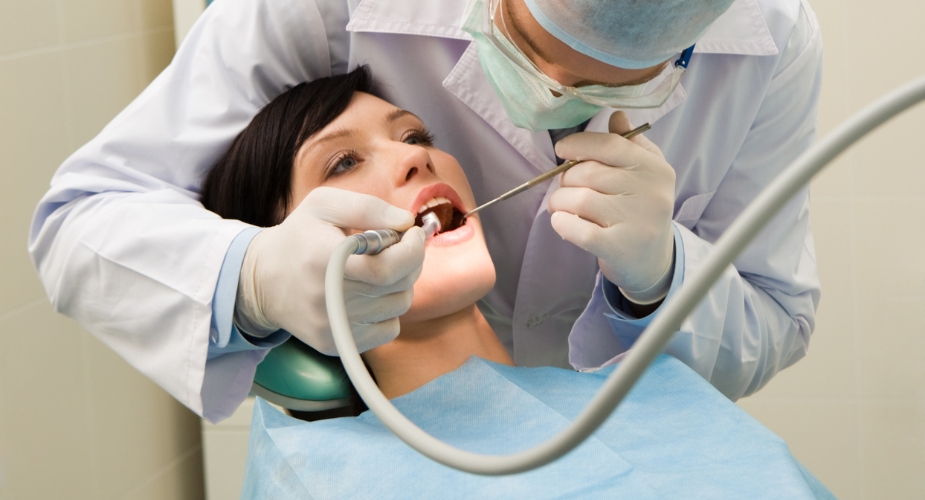Regarding dental health, there are various procedures aimed at preserving and restoring our precious smiles. One such common dental procedure is a simple dental extraction. While the thought of tooth extraction may cause some anxiety, understanding the process and its significance can alleviate concerns and help individuals make informed decisions about their oral health. In this blog, we will explore the concept of a simple dental extraction, the reasons why it may be necessary, and what individuals can expect during the procedure. By shedding light on this routine dental practice, we hope to equip readers with the knowledge needed to approach dental extractions with greater confidence and a deeper understanding of their oral health needs.
A simple dental extraction is a standard dental procedure performed by dentists or oral surgeons to remove a damaged or problematic tooth from its socket. While the word “extraction” may sound intimidating, it is essential to recognize that this procedure is typically straightforward and is carried out to promote better oral health. Various reasons may lead to the need for a dental extraction. One of the most common causes is severe tooth decay or damage that cannot be effectively treated with other dental interventions such as fillings or root canals. Additionally, tooth extraction may be necessary to address overcrowding, create space for orthodontic treatment, or remove impacted wisdom teeth.
Understanding the reasons why a dental extraction is recommended and the potential benefits it can offer can empower individuals to make informed decisions about their oral health care. Dentists will carefully assess each case, considering factors such as the tooth’s condition, the patient’s overall dental health, and their unique treatment goals before proceeding with an extraction. During a simple dental extraction, local anesthesia is typically administered to numb the area around the affected tooth, ensuring the patient’s comfort during the procedure. The dentist or oral surgeon will then use specialized dental instruments to loosen and remove the tooth from its socket gently. Following the extraction, the area will be carefully cleaned and may require stitches to aid in the healing process. Post-extraction care is essential for a smooth recovery. Dentists will provide patients with detailed instructions on how to care for the extraction site, what to eat, and how to manage any discomfort or swelling that may occur.
What is a Simple Dental Extraction Unraveling the Procedure
A simple dental extraction is a routine dental procedure performed by dentists or oral surgeons to remove a damaged, decayed, or problematic tooth from its socket. Despite the term “extraction” sounding daunting, this procedure is commonly used to promote better oral health and alleviate pain or discomfort caused by a damaged tooth. During a simple dental extraction, the dentist administers local anesthesia to numb the area around the affected tooth, ensuring the patient’s comfort during the procedure. Once the anesthesia takes effect, the dentist uses specialized dental instruments to loosen the tooth from its socket gently.
The tooth is then carefully removed from the mouth, leaving behind an empty socket that will heal over time. This extraction method is typically used for teeth that are fully erupted and have straightforward root systems. A surgical extraction may be required for more complex cases, such as impacted or severely damaged teeth.
Common Reasons for Dental Extractions When Is It Necessary?
Various dental issues can lead to the need for a dental extraction. One of the most common reasons is severe tooth decay or damage that cannot be effectively treated with other dental interventions like fillings or root canals. In such cases, removing the damaged tooth becomes necessary to prevent the spread of infection to neighboring teeth and preserve overall oral health. Additionally, dental extractions may be performed to address overcrowding in the mouth. This is often a concern for individuals considering orthodontic treatment, as removing one or more teeth can create space for teeth alignment.
Another common reason for dental extractions is the removal of impacted wisdom teeth. Wisdom teeth, also known as third molars, are the last set of molars to emerge at the back of the mouth. Due to lack of space or improper positioning, these teeth can become impacted and lead to pain, infection, and misalignment of neighboring teeth, necessitating their removal.
The Importance of Tooth Extraction Benefits for Oral Health
Dental extractions play a crucial role in maintaining oral health and preventing further complications. By removing severely damaged or decayed teeth, dentists can prevent the spread of infection and protect neighboring teeth from potential damage. Additionally, dental extractions are often recommended as part of orthodontic treatment plans. By removing overcrowded or misaligned teeth, orthodontists can create the necessary space for teeth to move into proper alignment, ensuring a straight and healthy smile.
In the case of impacted wisdom teeth, extraction is essential to prevent pain, swelling, and potential damage to nearby teeth. Removing impacted wisdom teeth can also reduce the risk of cyst formation and other oral health issues.
Preparing for a Dental Extraction What to Expect
Before a dental extraction, the dentist will thoroughly examine the affected tooth and surrounding areas. X-rays may be taken to assess the tooth’s root structure and its relationship to nearby teeth.
On the day of the extraction, the dentist will explain the procedure to the patient and address any concerns or questions they may have. Local anesthesia will be administered to numb the area, ensuring a painless experience during the extraction.
For more complex cases, such as impacted teeth or those with extensive root structures, the dentist may refer the patient to an oral surgeon for a surgical extraction.
Post-Extraction Care Ensuring a Smooth Recovery
After a dental extraction, proper post-operative care is crucial to facilitate a smooth and speedy recovery. The patient will be given post-extraction instructions, which may include:
• Biting on gauze: Patients will be instructed to bite down on gauze placed over the extraction site to control bleeding and promote blood clot formation.
• Avoiding certain foods: For the first few days, patients may need to avoid hard, chewy, or hot foods to prevent irritation of the extraction site.
• Pain management: Over-the-counter pain relievers may be recommended to manage any discomfort or swelling after the procedure.
• Oral hygiene: Patients should continue to maintain good oral hygiene, being careful not to disturb the extraction site while brushing and flossing.
• Follow-up appointment: A follow-up appointment will be scheduled to monitor the healing progress and ensure there are no complications.
By following these post-extraction care instructions and attending the follow-up appointment, patients can aid in healing and minimize the risk of complications.
A simple dental extraction is a routine dental procedure that promotes better oral health and alleviates dental issues. Whether it is for severe decay, overcrowding, or impacted wisdom teeth, dental extractions play a vital role in maintaining overall oral well-being. Understanding the procedure, reasons for extraction, and post-operative care can help individuals confidently approach dental extractions, knowing they are taking proactive steps towards preserving their precious smiles. By working closely with dental professionals and following post-extraction instructions, patients can ensure a smooth recovery and enjoy the benefits of a healthy and radiant smile for years to come. So, let’s embrace the importance of dental extractions and prioritize our oral health for a lifetime of dental vitality.
Conclusion:
A simple dental extraction is a common and valuable dental procedure aimed at promoting better oral health and preserving the overall well-being of individuals. Whether it is to address severe tooth decay, create space for orthodontic treatment, or remove impacted wisdom teeth, dental extractions play a crucial role in maintaining dental vitality. Understanding the procedure, common reasons for extractions, and the importance of post-operative care empowers individuals to confidently approach dental extractions and make informed decisions about their oral health. By seeking dental evaluation and following post-extraction instructions, patients can contribute to a smooth and successful recovery, minimizing the risk of complications and maximizing the benefits of the procedure.
Moreover, dental extractions are not just about the physical removal of a tooth but about promoting overall oral health and preventing potential issues from escalating. Dentists and oral surgeons work diligently to ensure that the extraction process is as comfortable as possible, prioritizing patient comfort and well-being throughout the procedure. As we prioritize our oral health, it is essential to recognize that dental extractions are not to be feared but embraced as a step towards preserving our precious smiles. By addressing dental concerns promptly and proactively, individuals can enjoy the benefits of a healthy and radiant smile for years to come.
So, let us continue to prioritize our oral health, seeking professional dental care when needed, and understanding the significance of dental extractions in supporting overall oral well-being. Embracing these proactive measures will undoubtedly pave the way for a lifetime of dental vitality and the confidence to showcase our smiles to the world.






